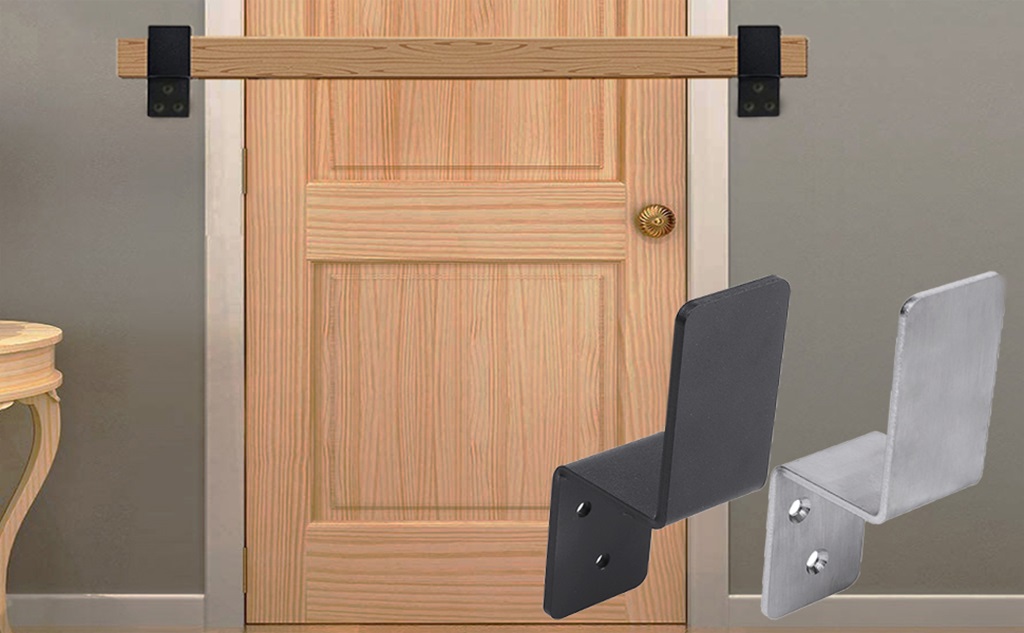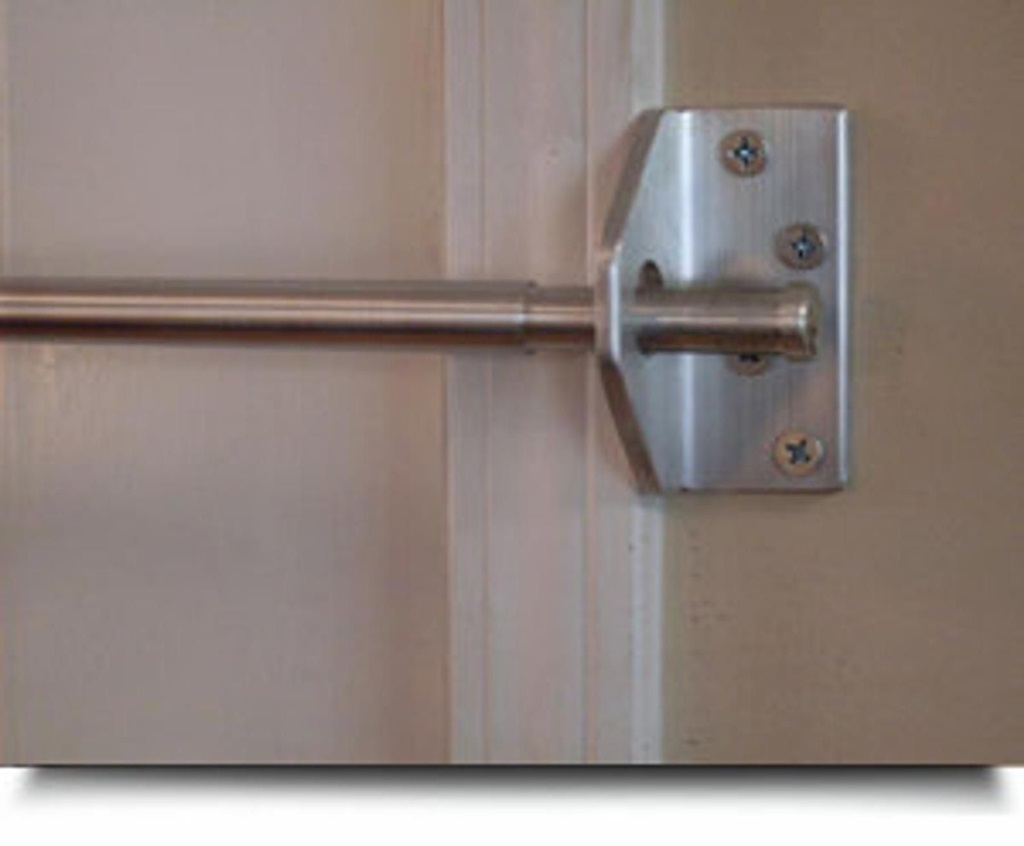Have you ever felt unsafe in your own home? Whether due to an intruder or some other threat, not knowing how to properly barricade a door can leave you and your loved ones vulnerable. But barricading a door is an essential skill that everyone should learn to keep their home secure.
In this comprehensive guide, I’ll walk you through the basics of barricading doors, from understanding the principles behind it to step-by-step instructions on how to barricade a door. You’ll learn clever techniques using everyday household items to fortify your doors against unwanted entry.
By the end, you’ll know to barricade doors like a pro and gain peace of mind knowing your home is well-protected. Let’s get started!
Why Barricade Doors?
Barricading doors serves two key purposes:
- Buys time by slowing down intruders
- Provides an additional layer of security
A properly barricaded door can take several minutes for an intruder to breach, giving you valuable time to escape, call for help, or prepare to defend yourself. It also adds an extra barrier between you and a potential threat, making it harder for them to gain entry and do harm.
Doors are often the weakest points of entry into a home. Reinforcing them with barricades significantly improves your home security and reduces the risk of a break-in. It’s a simple yet highly effective way to protect yourself and your loved ones.
Preparing to Barricade a Door
Before starting, you’ll want to take a few preparatory steps:
Choose a room
Pick a room with strong walls and few windows or other entrances. Bathrooms and interior rooms often work well. You want a space you can defend if an intruder does get inside.
Gather supplies
Collect ordinary household items to block the door like furniture, ropes, tools, etc. See the lists below for specifics.
Plan an escape route
Have a secondary exit like a window in case you need to flee the barricaded room. Make sure it opens easily.
Keep your phone nearby
You’ll want your phone to call for help if needed. Make sure it’s charged and has reception.
Have supplies on hand
Keep some food, water, and other essentials in the room so you can hold out until help arrives.
Choose solid doors
Reinforce doors to the room if they are hollow or weak. Solid wood or metal doors are best for barricading.
Preparation is key to an effective barricade. Once you’ve checked these items off your list, you’ll be ready to start barricading.
How to Barricade a Door

The key steps to barricading a door properly are:
1. Brace the door’s frame
Start by reinforcing the door frame with boards, a straightened coat hanger, or other rigid objects wedged diagonally underneath the knob. This jams the mechanism making it tougher to turn and open.
2. Use furniture to block the door
Push heavy furniture like dressers, shelves, or sofa chairs up against the door to create a barricade. Angle it to make removal harder. If you have time, securing furniture to the wall with screws or brackets adds stability.
3. Lock all locks
Make sure the door’s handle lock, deadbolt, chain, and any other locks are engaged. More locks mean more security.
4. Secure hinges
Removing the hinge pins can make lifting the door off its frame quick and easy for intruders. Drive nails or screws into the hinges to prevent the pins from being pushed out.
5. Add bracing beams
Cut 2×4 or 2×6 lumber to fit the width of your door and securely prop or nail it diagonally against the door and floor for added reinforcement.
6. Use rope, wire, or cable ties
Binding the barricading items together with strong rope, wire, zip ties or even duct tape makes the barrier harder to dislodge.
7. Pile heavy objects
Stack sandbags, bricks, dumbbells, pots of water, or any other dense objects around the base of the door. Their weight adds security.
8. Cover windows
Blackout curtains, plywood, cardboard, or even mattresses can block window access into the room. Eliminate alternate entry points.
9. Seal air gaps
Fill gaps around the door with rolled-up towels, blankets, plastic sheeting, or caulk to prevent entry through cracks.
Everyday Household Barricading Tools
No need to buy expensive barricading equipment. You likely already own many effective tools:
Furniture: desks, dressers, couches, bookshelves, piano benches
Tools: hammers, drills, screwdrivers, saws, pliers, shovels, axes
Beams: 2×4 and 2×6 lumber, wooden boards, metal/wood poles
Ropes/Cables: extension cords, rope, ratchet straps, zip ties, wire, garden hose
Heavy Objects: weights, dumbbells, sandbags, bags of soil, cinder blocks, pots of water, full buckets
Wedges: door stoppers, wooden pegs, folded cardboard, coat hangers
Padding: pillows, mattresses, rolled-up rugs, cushions, towels, blankets
Almost everything in your home can become a barricading tool with a little creativity!
Advanced Barricading Techniques
Once you’ve mastered the basics, try these advanced tips for maximum security:
- Place loud cans or bells on strings at doorways for early warning of entry attempts.
- Keep a pry bar, hammer, and nails on hand to quickly board up windows and doors from the inside.
- Install hasps, slide bolts, or surface-mounted door jammers for added internal bracing.
- Use sandbags or stacked cinder blocks instead of furniture – they’re heavier!
- Drill holes in each stair tread and insert rebar to slow upstairs access.
- Mount shelves or cabinets directly over stairs and fill with heavy items.
- Add interior locks at least 14 inches from the door’s edge for more locking points.
- Use wire mesh screens or plexiglass to reinforce vulnerable windows.
There are endless creative ways to implement barricades. Let your imagination run wild and be open to improvising with whatever is around you!
Barricading Materials To Avoid
While almost anything will work in a pinch, some materials are better than others:
- Avoid glass items – they easily shatter and cause injury.
- Not plywood or cardboard – they can break apart easily with force.
- No upholstered furniture – provides less resistance than solid wood.
- Not plastic crates – get crushed under weight and pressure.
- No paper materials – tears and rip apart fast.
Stick to solid, rigid, heavy materials that withstand impact for the strongest barricades. Soft, brittle, or hollow materials compromise the integrity of your barrier.
Maintaining Your Barricades
Regularly inspecting and maintaining your barricades keeps them effective over time:
- Check for damage and repair as needed.
- Tighten any loose ropes, beams, screws, or ties.
- Ensure furniture hasn’t shifted and remains wedged tightly.
- Test locks to confirm proper functioning. Lubricate if needed.
- Replace worn-out materials like frayed ropes or cracked wood.
- Check for potential entry points around the door and seal them up.
- Rehearse removing barricades quickly in an emergency.
Like any security system, your barricades require periodic upkeep and testing. Don’t let them fall into disrepair.
Removing Barricades
When the threat has passed, safely removing barricades takes planning:
- Have an escape route planned in case the intruder is still present.
- Remove objects methodically starting from the top down.
- Untie ropes, straps, and other bindings slowly to avoid getting hit by falling items. Watch your fingers!
- Carefully unwind jamming materials last, keeping pressure on the door.
- Watch out for heavy items tipping over as they are removed.
- Open the door slowly while staying behind it in case of gunfire.
- Don’t assume the perpetrator has fled – proceed with extreme caution.
Your safety should be the top concern when dismantling a barricade. Go slow!
Barricading Best Practices

To maximize your barricading success and safety, keep these key tips in mind:
- React quickly at the first sign of a threat. Hesitation wastes precious time.
- Use a secondary escape route if possible. Don’t corner yourself.
- Reinforce doors/windows ahead of time for faster barricading.
- Pick a room with minimal outside walls and windows if possible.
- Call 911 once secured inside the barricaded room.
Conclusion
Barricading doors is an essential skill for protecting yourself and your loved ones when faced with a home intruder or other emergency. With the techniques and tips covered in this guide, you now have extensive knowledge for barricading doors securely using ordinary household items.
The most important takeaways are using heavy furniture and beams braced diagonally, reinforcing frames and hinges, eliminating alternate entry points, and stacking dense objects. With practice and the right preparation, barricading can buy you invaluable time and security.
Stay safe out there! With the proper knowledge and training, you can confidently handle a barricade situation and secure your homestead. Barricading doors serve as an integral part of an effective home security plan.
FAQs
What are the best doors to barricade?
Solid wood or metal exterior doors are ideal. Avoid hollow interior doors if possible. Storm doors also aren’t very sturdy.
Should I remove the door from its hinges?
This can buy extra time but you likely won’t be able to replace the door. Remove only if you have time and tools.
How long will a barricaded door resist a determined intruder?
Anywhere from 3-20 minutes typically, depending on the methods used and their knowledge/tools.
What household weapons can I use if someone gets through?
Guns, knives, pepper spray, kitchen knives, boiling water, wasp spray, blunt objects, scissors, and more.
Should I barricade windows too?
Yes, especially any windows in the door or adjacent walls. Use opaque coverings to block vision inside.
How do first responders enter if I call 911?
Make sure to tell them you have barricaded yourself in a room when calling for help. They have tools to breach barricaded doors.
Can I re-fortify my door frames and hinges permanently?
Yes. Install reinforcing strike plates, longer screws in hinges, and wooden/metal jamb reinforcements for stronger doors.
What supplies should I store for barricade situations?
Food, water, flashlights, batteries, blankets, medical kit, weapons, escape mask, radio, tools. Enough to survive several days if needed.
How do I practice barricading quickly?
Time yourself to set up barriers and identify any issues. Have all members participate and provide feedback on the setup.

